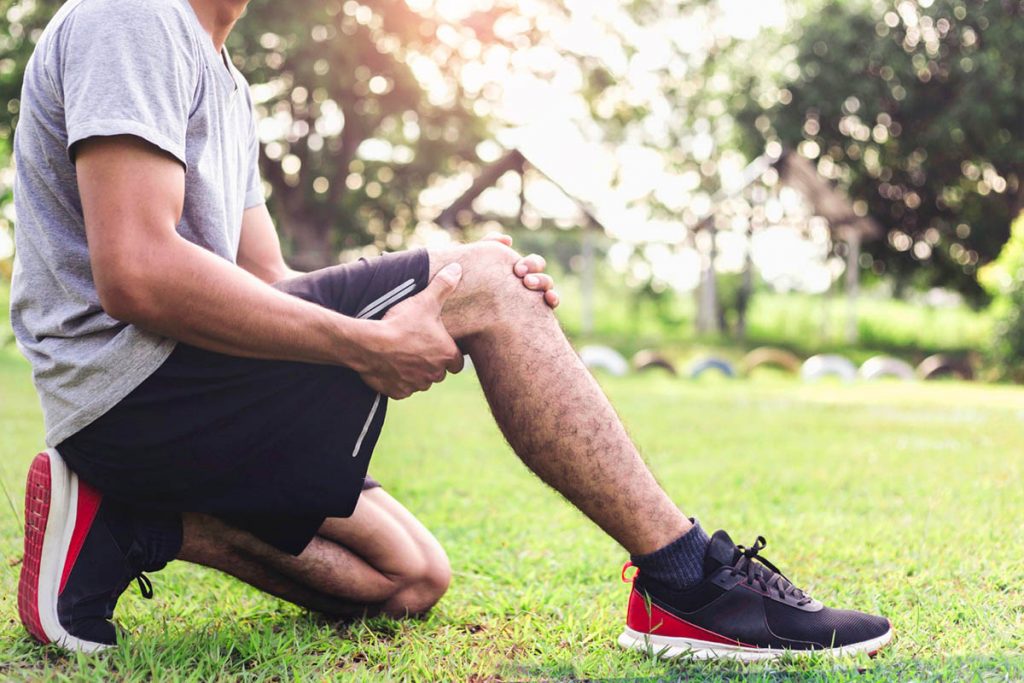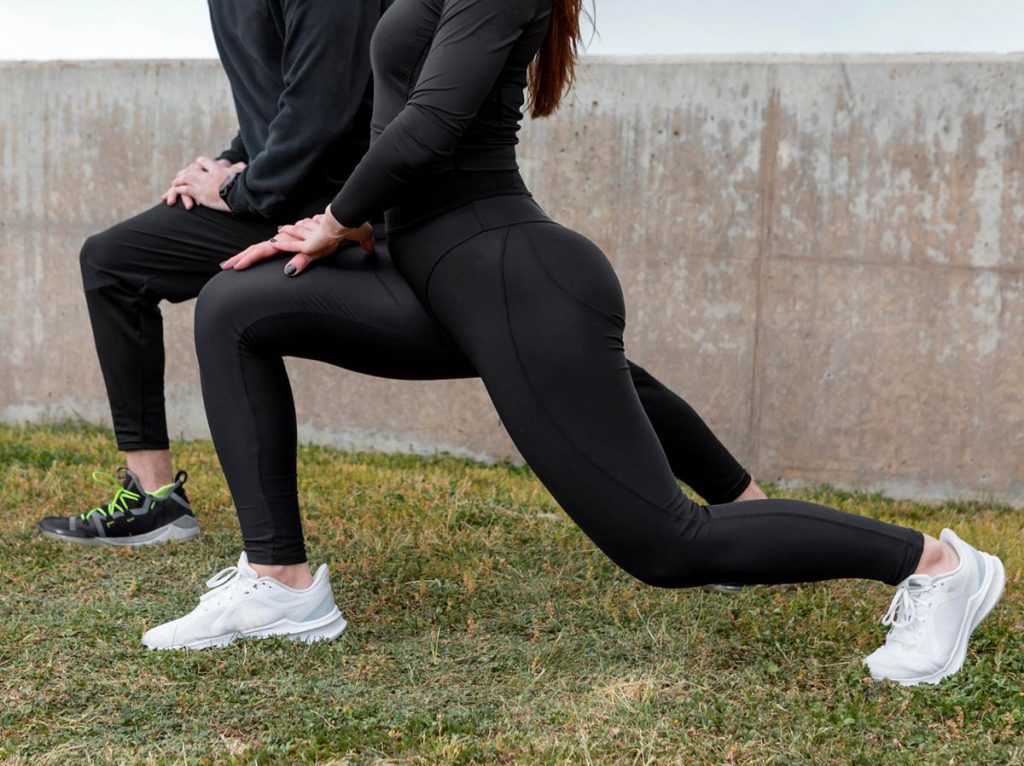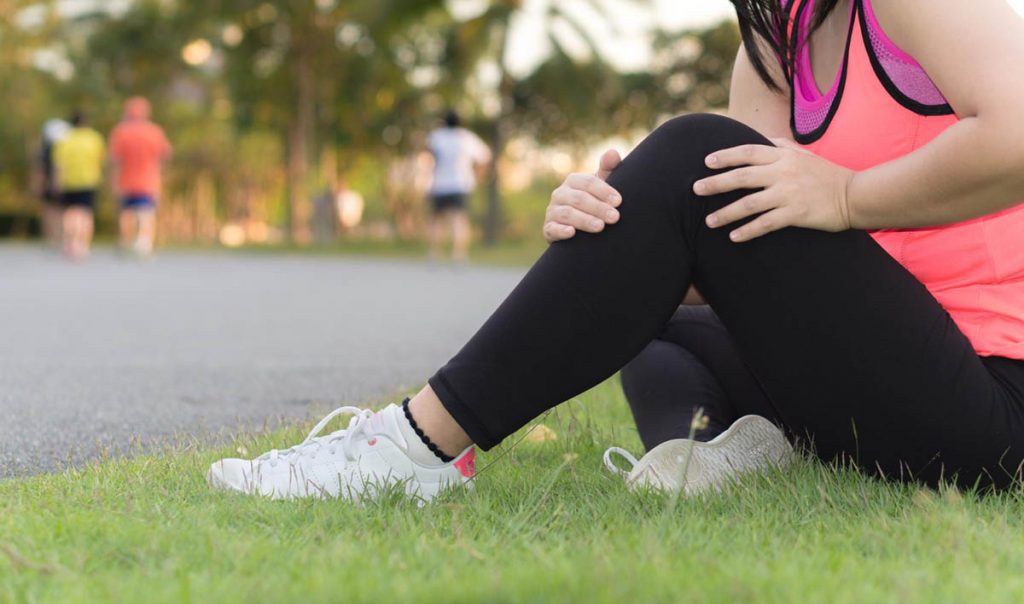Introduction
Knee pain when squatting is a common issue faced by athletes, fitness enthusiasts, and even those leading a sedentary lifestyle. This discomfort can range from a mild ache to sudden sharp knee pain when squatting, significantly impacting everyday activities. Recognizing the causes, treatments, and prevention strategies is important for maintaining knee health and ensuring a pain-free squatting experience.
Causes of Knee Pain When Squatting
Squatting Incorrectly
Improper squatting techniques can place excessive stress on the knees. This can make your knee hurt. Common mistakes include allowing the knees to cave in, not keeping the feet flat, and failing to maintain a straight back. These errors can cause unnecessary pressure on the knee joint and may result in discomfort due to muscle imbalances.
Patellofemoral Syndrome (Runner’s Knee)
Patellofemoral Syndrome, often referred to as Runner’s Knee. It occurs when the cartilage under the kneecap is damaged due to overuse or misalignment. This condition causes pain around the kneecap, especially when squatting down or kneeling.
Patellar Tendonitis
Patellar Tendonitis, also known as Jumper’s Knee, is a common injury that causes pain in the kneecap and makes activities like jumping or kneeling difficult. It affects people who put repetitive stress on their knees, especially athletes like basketball players (32%) and volleyball players (44.6%)
Osteoarthritis
Knee osteoarthritis is a degenerative joint disease that can cause knee pain when squatting. It results from the breakdown of cartilage, leading to bones rubbing against each other. This knee condition is more common in older adults but can affect anyone with joint wear and tear.
Tear in Cartilage
A tear in the knee cartilage, such as a meniscus tear, can cause significant pain when squatting. This injury often occurs from a sudden twist or impact and can lead to swelling, stiffness, and difficulty moving the knee.
Iliotibial Band Syndrome (ITBS)
Iliotibial Band Syndrome (ITBS) is a condition where the iliotibial band, a thick band of tissue running from the hip to the shin, becomes tight or inflamed. This can cause lateral knee pain, particularly when squatting or bending the knee.
Weak Glutes
Weak glutes can lead to poor squat form and increased knee stress. The gluteal muscles are important in stabilizing the pelvis and controlling the range of movement in the legs. When these muscles are weak, it can result in knee pain due to improper load distribution.
Treatment Options

Immediate Relief
For sudden sharp knee pain when squatting, immediate relief can be found through the RICE method—Rest, Ice, Compression, and Elevation.
- Rest: Avoid activities that aggravate the pain. Giving your knee some time to heal is important to prevent further knee injury.
- Ice: Apply ice packs or cold compress to the affected area for 15-20 minutes every 2-3 hours during the initial 48 hours after injury. Ice helps reduce swelling and numb the pain.
- Compression: Use an elastic bandage or knee sleeve to wrap the knee. Compression helps control swelling and supports the knee. This allows for a faster recovery.
- Elevation: Keep your knee elevated above heart level when resting. Elevation helps reduce swelling by allowing fluids to drain away from the injured area.
Over-the-counter pain relievers, such as ibuprofen or acetaminophen, can also help manage acute pain and inflammation. These medications can reduce swelling and provide temporary relief, allowing you to move more comfortably.
Physical Therapy
Physical therapy is a highly effective treatment for knee pain. A therapist can design a personalized exercise program to strengthen the muscles around the knee, improve flexibility, and correct improper movement patterns.
- Strengthening Exercises: Targeted exercises for the glutes, hamstrings, and quadriceps muscles can help stabilize the knee joint. Strong muscles around the knee can better absorb stress and reduce the risk of injury.
- Flexibility Exercises: Stretching the muscles and tendons around the knee can improve flexibility and reduce tension. Improved flexibility helps maintain a proper range of motion and prevents stiffness.
- Movement Correction: Physical therapists can assess and correct improper movement patterns that contribute to knee pain. This may include gait analysis and training to ensure proper knee alignment and reduce stress on the knee joint.
- Manual Therapy: Techniques such as massage, joint mobilization, and myofascial release can help relieve pain and improve mobility. These hands-on treatments can reduce muscle tension and promote healing.
Combining regular physical therapy services with a personalized home exercise program can lead to significant improvements in knee function and pain reduction.
Medical Interventions
In some cases, medical interventions may be necessary to address severe or persistent knee pain. These options can include:
- Corticosteroid Injections: Corticosteroid injections can reduce inflammation and provide relief from pain. These injections are typically used when other treatments have not been effective. The anti-inflammatory properties of corticosteroids can offer quick relief, although the effects are usually temporary.
- Arthroscopy: In severe cases, minimally invasive surgery called arthroscopy may be necessary. During an arthroscopy, a surgeon inserts a small camera into the knee joint to repair or remove damaged tissues. This procedure is used for common conditions such as meniscus tears, cartilage damage, and removing loose bodies in the knee.
- Partial or Total Knee Replacement: For advanced cases of osteoarthritis or severe joint damage, partial or total knee replacement surgery may be recommended. This involves replacing the damaged joint surfaces with artificial components to restore function and relieve pain.
Prevention Strategies

Proper Squatting Techniques
Learning and maintaining proper squatting techniques is vital for preventing knee pain. Ensure that your knees track over your toes, keep your back straight, and avoid letting your knees cave inward. Using a mirror or recording your squats can help you monitor your form.
Strength and Conditioning
Strengthening the muscles around the knee, particularly the quadriceps, hamstrings, glutes, and leg muscles, can help distribute the load more evenly and reduce knee strain. Regular strength training exercises should be incorporated into your fitness routine.
Flexibility and Mobility
Improving flexibility, ankle mobility, and knee mobility can prevent knee pain when squatting down. Incorporate stretching and mobility exercises into your routine to enhance the range of motion and reduce stiffness.
Adequate Warm-up and Cool-down
An adequate warm-up before exercising and a proper cool-down afterward are important for preventing injuries. Warm-up activities should include dynamic stretches and light aerobic exercises, while cool-down should focus on static stretching and muscle relaxation.
Find Relief at Land and Sea Physical Therapy
Struggling with knee pain when you squat or kneel down? You’re not alone. At Land and Sea Physical Therapy, we help athletes and people of all ages overcome knee pain and get back to doing the activities they love.
Our expert physical therapists will create a personalized treatment plan to address your specific needs, using a combination of manual therapy, exercise, and education to promote healing and prevent future pain. Request appointment today and get started on your path to recovery!
Conclusion
Knee pain when squatting can significantly hinder your daily life and fitness goals. However, you can manage and even eliminate this pain by understanding the causes, exploring various treatment options, and adopting effective prevention strategies. Proper techniques, strength training, and seeking healthcare professional help when needed are key to maintaining knees healthy and pain-free.
FAQs
How do you fix knee pain when bending?
Fixing knee pain when bending involves a combination of rest, proper exercises, and addressing the underlying cause. Strengthening the muscles around the knee, improving flexibility, and ensuring proper form during physical activities can significantly reduce pain. Physical therapy can also be beneficial in designing a targeted rehabilitation program.
How do I know if my knee pain is serious?
You should seek medical attention if your knee pain is severe, persistent, or accompanied by swelling, instability, or an inability to bear weight. Sudden sharp knee pain when squatting that doesn’t improve with rest, and home care might indicate a more serious condition requiring professional evaluation.
Does runner’s knee go away?
Runner’s knee, or Patellofemoral pain syndrome, can go away with proper treatment and modifications to daily activity. Rest, physical therapy, and exercises to strengthen and stabilize the knee can help relieve symptoms. However, continuing activities that caused the pain without making necessary adjustments can prolong recovery.

